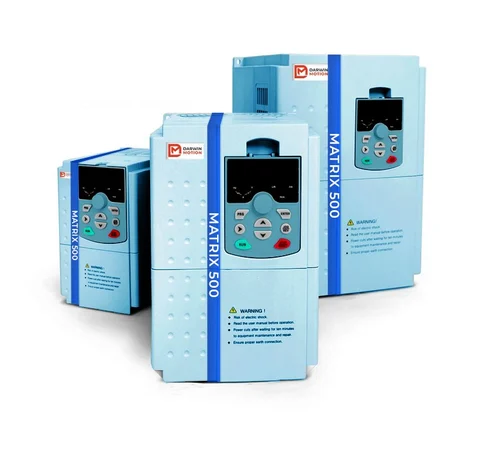Posted on 17th Jul 2023

Variable frequency drives, or VFDs, are a type of motor controller that allow you to adjust the speed of an electric motor. VFDs are an essential part of many industrial and commercial applications, and knowing how to control them is important for anyone who wants to work with electric motors. In this blog post, Darwin Motion will discuss some of the most common VFD control techniques and VFD Price List 2023.
VFD full form in electrical is Variable frequency drives (VFDs) are used to control the speed of electric motors. The most common technique for controlling the speed of a VFD Drive is to use a feedback signal from the motor to the VFD. The VFD then adjusts the frequency of the power supplied to the motor to maintain the desired speed. There are several other techniques that can be used to control the speed of a VFD Drive. These techniques include: adjusting the voltage, adjusting the current, and adjusting the pulsewidth.
Speed Control
Speed control is an important aspect of robotics. In this chapter, we will discuss different methods for controlling the speed of a robot. We will start by discussing how to control the speed of a robot using a motor controller. We will then discuss how to control the speed of a robot using a microcontroller. Finally, we will discuss how to control the speed of a robot using a computer.
Torque Control
In order to achieve the desired torque, a controller is needed. The controller will take input from the sensors and output a signal to the actuator in order to generate the desired torque. There are many different types of controllers, but for this project a proportional-integral-derivative (PID) controller will be used.
Position Control
Position control is a critical function for any robot system. In order to achieve the desired tasks, the robot must be able to accurately locate and track desired points in space. This requires a robust and reliable position controller.
There are a number of different methods for position control, each with its own advantages and disadvantages. Some common methods include PID control, Kalman filtering, and observer-based control. Each has its own strengths and weaknesses, and the best method for a particular application depends on the specific requirements of the system.
In most cases, a combination of methods can be used to achieve the best results. For example, PID control can be used to provide fast, accurate position control, while Kalman filtering can be used to provide a more robust estimate of the position.
Pressure Control
In order to maintain the correct pressure in the system, the pump controller utilizes pressure control valves. There are two types of pressure control valves: the relief valve and the regulator valve. The relief valve is a safety valve that opens when the system pressure exceeds the set point. This allows the pressure to bleed off until the pressure reaches the set point, at which point the relief valve closes. The regulator valve is used to maintain the desired pressure in the system.
Flow Control
Flow control is a term used in computer programming to describe the ability to regulate the flow of data between two points in a program. Flow control can be used to ensure that data is processed in the correct order, to prevent buffer overflows, and to limit the amount of data that is processed at any one time.
Temperature Control
Temperature is an important consideration when brewing beer. Too high a temperature can cause the beer to become sour or even to boil over. Too low a temperature can cause the yeast to become inactive and the beer will not ferment. The ideal temperature range for brewing beer is between 68 and 72 degrees Fahrenheit.